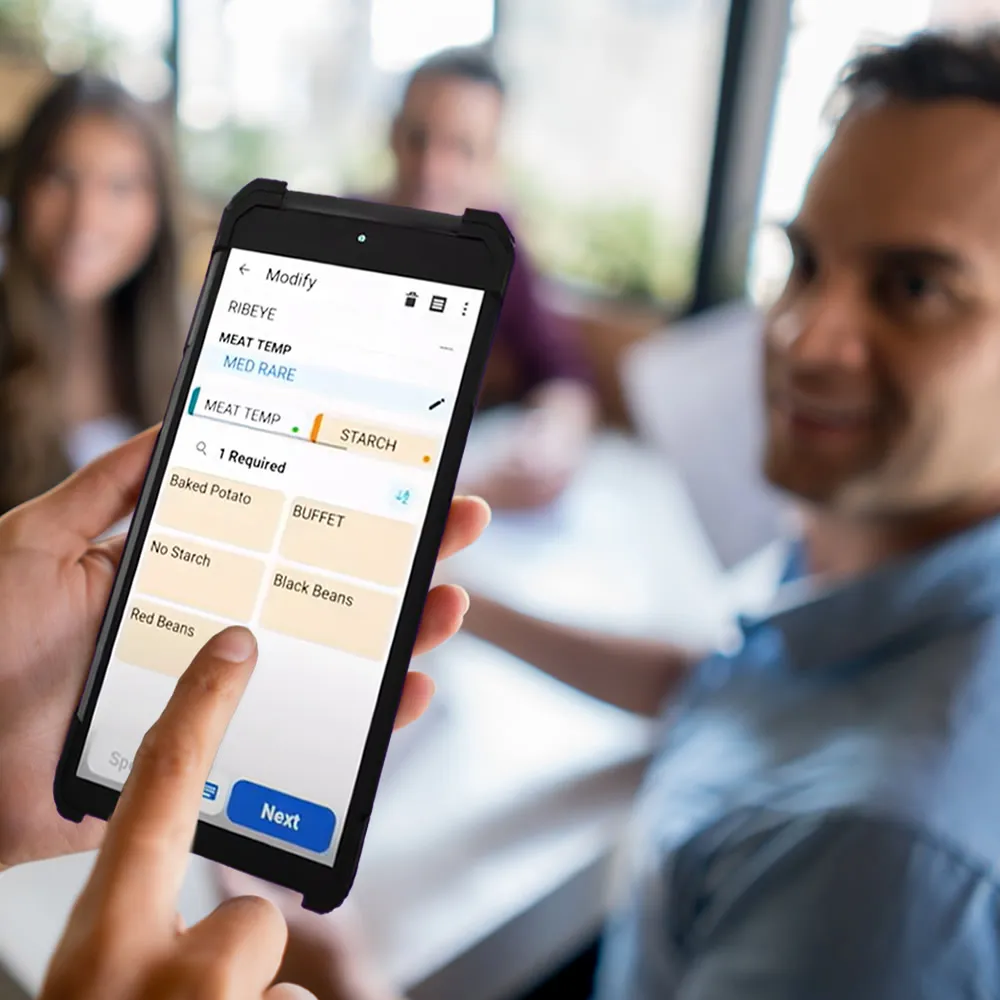Reaching customers online is one of the best ways to keep them engaged and in the know about your restaurant’s happenings. Though email has been around forever, it hasn’t lost its relevance—in fact, 87% of marketers, according to HubSpot, say that email is critical to business success for building relationships and brand awareness. Because most users check their inbox multiple times a day, email is an effective way to engage with customers once you have their email addresses. Sending email marketing can encourage guests to order online or visit your restaurant, as well as deepen their engagement with your brand.
There are three components to an email—the subject, the body, and the call to action—and each of them offer opportunities to get your restaurant guests' attention.
The subject line: the first glimpse of the email
In the subject, you have three objectives: catch the reader’s eye so they click on the email, inform them of something they care about and extend your brand power. A good subject header can do this in six words or less. Here’s how you can master the art of the effective subject line:
• Know your voice. Every company has a voice, based on the words they use, and a brand, based on what theme those words craft. Think of your brand as an extension of the atmosphere you’ve created in your restaurant. Do you have an upscale, high-end table service restaurant? Or maybe you have a family-owned pizza joint? Keeping your voice consistent strengthens your brand.
• Be eye-catching and direct. It’s important to remember that you aren’t the only company who’s sending customers emails. Catch your reader’s eyes in as few words as possible and make the content as informative as possible. Stick to a concise but interesting headline that tells readers exactly what’s inside, without overpromising.
• Here are some examples of subject lines that you could use:
o It’s pumpkin spice latte season 🍂
Why: Using evocative language makes your readers crave the food you’re talking about and creates feelings of coziness. Emojis bring a pop of color to the inbox and catch the eye.
o $5 off all wings? Yes please.
Why: With everything you write to customers, put yourself in their shoes. All customers want to save money, so letting them know of any deals will spur action—especially when the sales are timely, like wings for the Super Bowl.
• Here are some weaker subject lines:
o Check out our fall tea blends!
Why: To get customers to click, you need to give them more value to get them to click. If you wanted to highlight a sale or an offer, lead with that.
o You won’t believe how many new wing flavors we have for the big game
Why: This subject line is interesting, but it’s too long. This might only display as, “You won’t believe how many…” which doesn’t tell the reader anything important enough to click on. Give enough information in the first 25 characters (including spaces).
• Tip: To make sure that you’re getting the highest email marketing open rate, you can A/B test your email headers. This means that you select two small groups of customers and give one email subject to one (group A), and a different subject to another (group B). Whichever has a higher open rate gets sent to the larger base.
The body: what makes the click worth it
For the body of the email, you have three objectives: reinforce what was said in the subject, provide more value to customers and sway them to want to buy. Here’s how:
• Use strong photography. Good photography can make or break a potential customer’s interest. If you operate a burger restaurant, make sure whoever opens the email can see the juiciness of the patty, the toastiness of the bun—and pair it with some crispy fries and a refreshing, bubbly soda.
• Get the senses tingling. Like your photography, make sure your words are descriptive. Use the five senses—especially taste—to get your customers engaged in your messaging. Look back at our description of the burger, fries and soda. Doesn’t that sound mouthwatering? That’s the experience you want your readers to have so that they’ll move towards a purchase.
• Promote your sales. Highlight popular menu items at good prices so that people are more willing to go out. Don’t be shy about sending emails with deals and offers—after all, nobody has a problem with getting a good deal.
• Highlight in-demand items. Other items become popular depending on the time of year. For example, on Saturdays and Sundays in the fall, game food like pizza and wings can be promoted. For online orders, a great way to get them to buy is to remind them of something they buy often. That’s the level of personalization that guests have come to expect and having that will extend the connection they’ll have to your brand.
• Keep it short. If you’ve made it to where the guest has clicked on the email, boring them with a dissertation will only teach them to not click on another one. Focus on one main selling point. Use pictures, gifs, or video to break up text. If you have a significant amount of information, it’d be best to create a newsletter, but be sure to lower the number of emails you’re sending them.
• Time it right. You can do everything we’ve laid out for you, but if you don’t send your emails at the right time, your guests may not see it. There are three ideal days for sending emails: Tuesday, Wednesday and Thursday. Some of the best hours would be between 9 and 11 am. If a guest likes to get a salad for lunch, why not send them something around 10:30-11 am when they’re thinking about food? This is also very audience dependent, so test and track send times to see when you get the best response.
The call-to-action: the key to conversions
At this point, you have a succinct subject, a short but informative body, and the guest is ready to buy. The only objective now is to bring the customers to action.
• Link the right information. A call-to-action (CTA) is what you want your customers to do with the information you’ve given them, and usually, the desired outcome is a purchase. Give them what they need to convert the email into a purchase—and the more you give, the easier it is to convert.
• For online orders, this can be a link to your online ordering platform. Create a CTA “button”, a link that’s inside a colorful link. You might notice that we have our own CTA, a “Contact Us” button so that we make it easy for restaurants to reach out for any questions about us. A good CTA is visible, short, and leads to a relevant link. Here’s an example of a CTA button that links back to our online ordering solutions:

• Tie them all together. The subject, body and call-to-action all come together to give your customers information they want to know in as few words as possible. Make sure the formatting is clean and that the email is colorful and aesthetically appealing. Creating a cadence of emails that consistently brings value to customers helps you to bring traffic to your online ordering platform, and that will create more conversions—and revenue—to your restaurant.
Adding action-packed and strategically built emails into your restaurant marketing plan can be a great way to build awareness of new menu items, drive traffic through your in-store and digital channels and increase revenue. Be sure to check out other blogs to amplify your restaurant marketing strategy.



